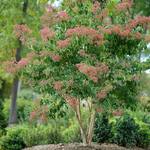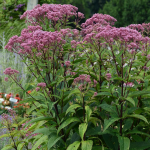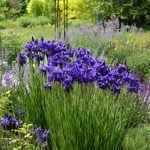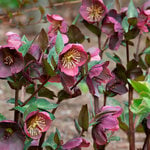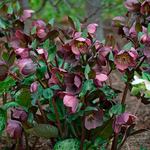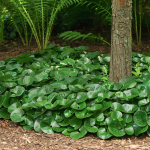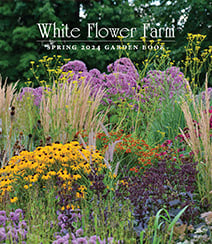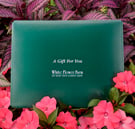Product Details
An extraordinary native strain of Blue Flag introduced by Mt. Cuba Center in 2020, Iris versicolor ‘Purple Flame’ surprisingly shares the purple tones of its graceful flowers with its emerging, early spring foliage. The pointed, aubergine-tinged leaves, eventually changing to green as the weather warms, are reason enough to love this Iris. In late spring and early summer, the show turns to the blue-violet blooms borne upon handsome dark stems. Beloved by butterflies and hummingbirds, the flowers exhibit golden signals upon their falls, which serve as nectar guides for bumblebees and other native bees that also pollinate this Iris. The clump-forming plants, which are especially effective planted en masse, tolerate wet soils such as those found at the edge of ponds.
The Iris genus is named for the Greek goddess of the rainbow, and it’s easy to see why. These brilliantly colored, spring-flowering perennials are part of a huge plant family that contains upwards of 300 species. Iris range from timid and inconspicuous wildlings to the splendid and extravagant Tall Bearded Iris, which create striking vertical highlights in the late spring border. The chosen habitats of Iris range from standing water to formal borders, and there is scarcely a color or combination of colors that can't be found. Iris plants are fairly indestructible. They thrive in most parts of the country and are largely critter resistant. Adding to their appeal, they are magnets for hummingbirds and other pollinators. Plant a variety and enjoy a rainbow of colors that will return year after year in your garden.
For more information on growing Iris, click Growing Guide.
Shipping
HOW PLANTS ARE SHIPPED
The size of the plants we ship has been selected to reduce the shock of transplanting. For some, this means a large, bareroot crown. Others cannot travel bareroot or transplant best if grown in containers. We ship these perennials and annuals in 1 pint pots, except as noted. We must point out that many perennials will not bloom the first year after planting, but will the following year, amply rewarding your patience. We ship bulbs as dormant, bare bulbs, sometimes with some wood shavings or moss. Shrubs, Roses, vines, and other woody plants may be shipped bareroot or in pots. The size of the pot is noted in the quick facts for each item.
WHEN WE SHIP
We ship our bulbs and plants at the right time for planting in your area, except as noted, with orders dispatched on a first-come, first-served basis by climate zone. We also ship a wide range of containers and planters, tools, supplies, fertilizers, garden wear, garden decor items, as well as indoor decorations like wreaths and dried bouquets when available. Estimated dates for shipping are indicated in the green Shipping Details box for each item. Please supply a street address for delivery. Kindly contact us with two weeks notice, if you'll be away at the expected time of delivery.
OUR GUARANTEE
We guarantee to ship plants that are in prime condition for growing. If your order is damaged or fails to meet your expectations, we will cheerfully replace or refund it. Please contact our Customer Service Department at 1-800-503-9624 or email us at [email protected]. Please include your order number or customer number when contacting us.
Reviews
There are no reviews yet. Be first to Write a Review.
Growing guide
Latin Name Pronunciation: eye'-riss
Grow in full sun or partial shade. Plants thrive in boggy conditions and will grow in standing water, but they also perform well in evenly moist garden soil

